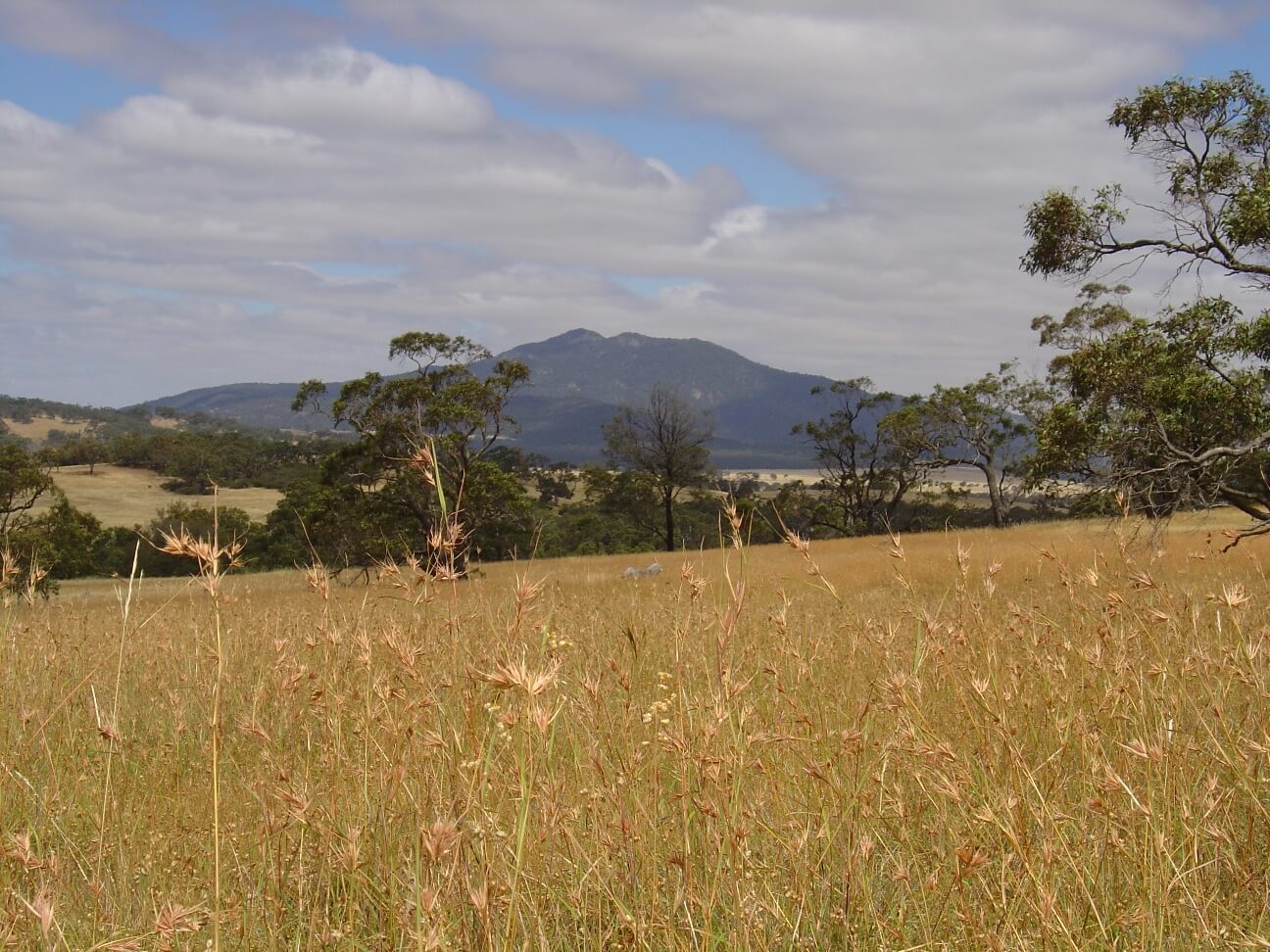Native grasses and pastures
‘Australian native grass’ is a general term to describe a diverse range of grasses that have evolved in Australia over millions of years. There are about 1000 native grass species in Australia. They are well adapted to the harsh and varying climate and low-fertility soils, and play an important part in maintaining ecosystem health.
Agricultural development over the past two centuries has changed the diversity and extent of native grasslands. Many remnants of native grassland are on small patches of public land or on uncultivated areas of lightly grazed private land. Native grasslands in Victoria often contain varying proportions of introduced perennial and annual species. On this page, native pasture is defined as a pasture where native grasses are the dominant perennial species.
The agronomic and environmental benefits of Australian native grasses have sometimes been underrated. Studies have found that in some situations native grasses have both environmental value and agronomic characteristics such as dry matter production, potential to respond to summer rain events, persistence and nutritive value similar to introduced species. There are situations and environments where native pastures can be a well-adapted, sustainable and productive choice for livestock production.

Benefits and limitations
In agricultural grazing systems, native grasses offer a range of benefits:
- Native grasses are mostly perennials and persist well in the Australian environment.
- Some have nutritive characteristics similar to introduced pasture species.
- They can cope with adverse climate conditions such as droughts, heavy rains and frosts.
- Many tolerate low fertility, acid soils and water stress, and are more resistant to disease.
- Different native species such as warm season or cool season grasses have growth periods at different times of the year, providing the potential for year-round green feed.
- Most have dense tillers and roots that hold the soil and allow increased use of soil moisture to help prevent soil erosion and nutrient runoff.
- Some native grasses can also help control dryland salinity due to their deep root systems, summer activity and perenniality, reducing recharge to ground water.
- They can provide a lower input grazing system, reducing the dependence on finite resources.
- They provide for integrated pest management and native biodiversity.
Native grasses also have some limitations:
- Wild species have diverse genetic traits, flower over a long period, have lower seed yields or do not yield commercial quantities of viable seed.
- They are difficult to establish through sowing with traditional sowing technologies.
- Some species are less palatable to stock due to coarse hairy leaves and have lower nutritive values and herbage yield.
- Under conditions where improved pasture species perform adequately, native grasses are unlikely to be more productive or be able to compete with improved pasture species.
Overgrazing
Overgrazing caused by set-stocked grazing practices and the grazing behaviour of livestock results in lower ground cover in key areas of the landscape. This is a major challenge for managing native pasture on steep hill country where low groundcover occurs frequently on hill crests and sides over summer and autumn. This has significant economic impact through reduced green feed and stocking rates, while environmental impacts occur through wind erosion, soil/nutrient runoff, recharge and loss of biodiversity.
When a native pasture is set stocked, perennial species are subject to selective and heavy grazing. Overgrazing of perennial species, particularly when plants are stressed by low soil moisture, can lead to the death of plants and a decline in the population.
A low population of perennial species in the sward of native pastures will encourage invasion by other species such as onion grass, broadleaf weeds and annual grasses. Less palatable annual grasses, such as silver grass, are opportunistic species that germinate when soil moisture becomes available and complete their life cycle in a short time frame (mostly from late autumn to mid-spring). These annual pastures then die and decompose during summer and autumn, leaving behind bare ground. When these species form a major part of the pasture over the growing season, pasture production and nutritive value deteriorate dramatically.
Managing and rejuvenating native pastures
Ways to restore native grasses in degraded pastures include:
- seed production and seedling recruitment of new native grasses
- increased vigour of existing native grass plants
- stronger competition of native grasses with other species (either through seeds or plants).
Strategies that promote one or more of these are likely to rejuvenate native pastures.
Deferred grazing that matches the timing of grazing or resting of a pasture to an appropriate growth stage of the desired pasture grass will provide positive selection pressure for the species. For example, withholding grazing from spring to late summer allows desirable perennial plants to set seed and conserve energy, leading to higher recruitment rates of new plants and plant tillers in autumn and winter. Grazing heavily after annual grass stem elongation, but before seed head emergence, followed by resting over spring and summer, will increase the amount of seed produced by perennials, while reducing the seed from undesirable annuals.
More information
- EverGraze: search for native pasture/case study
- Friends of Grasslands aims to promote and facilitate identification and conservation of native grasslands and grassy woodlands
- The Australian Pesticide & Veterinary Medicine Authority (APVMA) maintains a searchable database of chemicals
- The Environment Protection and Biodiversity Act 1999